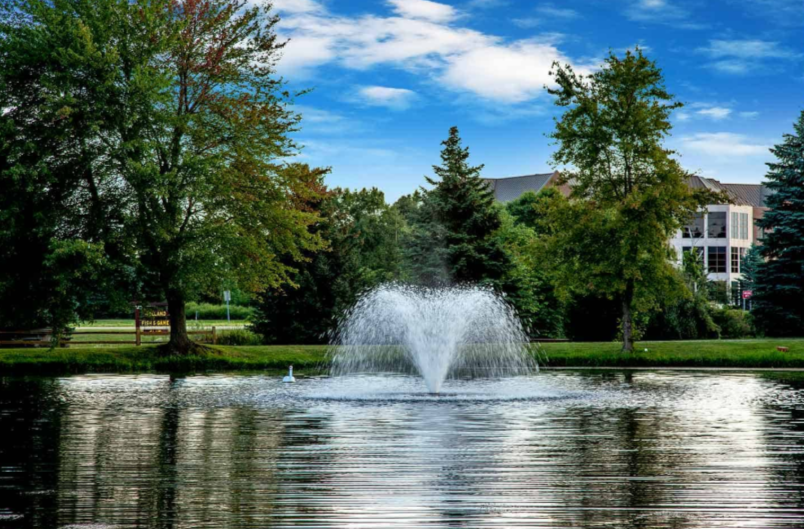The Perfect Spot: Strategic Placement for Optimal Pond Fountain Impact
Creating a stunning water feature requires more than just selecting the right equipment. The location you choose for your fountain can make the difference between a breathtaking centerpiece and a costly mistake. Poor placement decisions often lead to maintenance headaches, reduced visual impact, and missed opportunities to enhance your outdoor space’s overall appeal.
When planning your water feature installation, understanding the nuances of pond fountains placement becomes crucial for long-term satisfaction. The right location balances aesthetic appeal with practical considerations, ensuring your investment delivers maximum enjoyment. Strategic positioning transforms an ordinary water feature into a captivating focal point that enhances property value and creates lasting memories for years to come.
Understanding Your Viewing Perspectives
Primary Observation Points: Your fountain’s impact depends heavily on where people will view it most frequently. Consider the main areas where you and your guests spend time outdoors, such as patios, decks, or favorite seating areas. These primary viewing angles should showcase your fountain’s best features while creating an inviting atmosphere that draws people closer to the water.
Indoor Visual Access: Don’t overlook the views from inside your home, particularly from frequently used rooms like kitchens, living rooms, or bedrooms. Windows offer year-round viewing opportunities, allowing you to enjoy your fountain even during inclement weather. Position your fountain where it can be appreciated from these indoor vantage points, creating a seamless connection between your interior and exterior spaces.
Multiple Angle Considerations: A well-placed fountain looks appealing from various perspectives, not just one primary viewpoint. Walk around your proposed location at different times of day to evaluate how the fountain will appear from multiple angles. This comprehensive assessment helps avoid situations where the fountain looks spectacular from one spot but disappointing from others.
Practical Infrastructure Requirements
Electrical Access Planning: Power supply logistics significantly influence fountain placement decisions, as running electrical lines can become expensive and complicated. Evaluate existing electrical infrastructure and consider the cost of extending power to your desired location. GFCI protection is mandatory for all fountain installations, so factor in the requirements for proper electrical safety measures when making placement decisions.
Water Source Proximity: While not always necessary, having water access nearby simplifies maintenance tasks like refilling and cleaning. Consider seasonal water needs, especially in areas with high evaporation rates or where you might want to drain the fountain for winter storage. Easy access to water sources reduces the effort required for regular upkeep and maintenance routines.
Maintenance Access Routes: Plan for regular maintenance by ensuring your fountain location allows easy access for cleaning, repairs, and seasonal care. Consider how you’ll transport tools, replacement parts, or cleaning supplies to the fountain location. Difficult access routes often lead to deferred maintenance, which can result in costly repairs and reduced fountain lifespan over time.
Environmental Factors and Natural Considerations
Wind Pattern Assessment: Wind direction and intensity dramatically affect the operation of the fountain and surrounding area comfort. Strong winds can push water spray beyond the pond boundaries, creating unwanted wet areas on patios, walkways, or outdoor furniture. Observe wind patterns throughout different seasons and times of day to identify locations that offer natural wind protection or require additional windbreak planning.
Sunlight Exposure Analysis:
- Morning sun exposure: Creates beautiful backlighting effects and helps prevent algae buildup
- Afternoon shade protection: Reduces excessive evaporation and provides comfortable viewing conditions
- Seasonal sun changes: Account for how tree coverage and sun angles change throughout the year
- Reflection opportunities: Position fountains to capture and reflect natural light for enhanced visual impact
Debris Management Strategy: Overhanging trees and nearby vegetation can create ongoing maintenance challenges through falling leaves, branches, and organic matter. While you don’t want to eliminate all vegetation, strategic placement away from heavy debris sources reduces cleaning frequency and protects fountain components from damage. Consider seasonal debris patterns and plan accordingly for different times of year.
Safety and Practical Considerations
Slip Hazard Prevention: Fountain spray and splash can create slippery surfaces on nearby walkways, patios, or deck areas. Position your fountain where water spray won’t create dangerous conditions in high-traffic areas. Consider the safety of children, elderly family members, and guests who might not be familiar with potential wet spots around your water feature.
Noise Level Management: While the sound of flowing water is generally pleasant, fountain placement affects how sound travels throughout your property and potentially to neighboring areas. Consider bedroom windows, quiet outdoor spaces, and neighbor relationships when positioning your fountain. The goal is creating soothing ambient sound without overwhelming conversation areas or creating noise complaints.
Wildlife Interaction Planning: Fountains attract various wildlife, from birds seeking drinking water to larger animals looking for water sources. While this can be delightful, consider how wildlife activity might affect your fountain’s operation and surrounding areas. Position fountains where wildlife visits enhance rather than complicate your outdoor experience.
See Also: How Startups Use Tech to Disrupt Industries
Maximizing Visual and Auditory Impact
Creating Focal Points: Strategic fountain placement can direct attention and create natural gathering spaces in your outdoor area. Use your fountain as an anchor point for landscape design, positioning it where it naturally draws the eye and creates visual interest. Consider how the fountain interacts with existing landscape elements like gardens, pathways, or architectural features.
Sound Optimization Techniques: Water sound varies significantly based on fountain height, water volume, and surrounding surfaces. Experiment with different positions to find locations where the sound level and quality match your preferences. Hard surfaces like concrete or stone can amplify sound, while soft surfaces like grass or mulch tend to absorb and mellow fountain sounds.
Lighting Integration Opportunities: Evening fountain enjoyment depends on proper lighting integration, which is easier to achieve with thoughtful initial placement. Consider how existing landscape lighting works with your fountain location, and plan for additional lighting that enhances the water’s movement and creates dramatic evening displays. Underwater lighting and nearby accent lighting can transform your fountain into a stunning night time feature.
Seasonal Adaptability and Long-term Planning
Weather Protection Strategies: Different seasons bring unique challenges for fountain operation and maintenance. Consider how your chosen location will handle winter weather if you live in a climate with freezing temperatures. Some locations offer natural protection from harsh weather, while others might require additional winterization measures or seasonal fountain removal.
Growth and Change Accommodation: Landscape elements change over time as plants grow, structures age, and your needs evolve. Choose fountain locations that can adapt to these changes without requiring major repositioning or infrastructure modifications. Consider how nearby trees will grow, how your landscape use patterns might change, and how the fountain fits into long-term property development plans.
Maintenance Evolution Planning: Your ability to maintain your fountain may change over time due to physical limitations, time constraints, or changing priorities. Select locations that will remain accessible and manageable even if your maintenance approach needs to evolve. This forward-thinking approach ensures your fountain remains a joy rather than a burden throughout its lifetime.
Conclusion
Thoughtful fountain placement transforms your water feature from a simple addition into a carefully integrated element that enhances your entire outdoor experience. The time invested in evaluating viewing angles, infrastructure requirements, environmental factors, and long-term considerations pays dividends in reduced maintenance, increased enjoyment, and enhanced property value. Remember that the perfect location balances aesthetic appeal with practical functionality, creating a harmonious blend that serves your needs both now and in the future. Take the time to carefully assess your options, consider multiple factors, and choose a location that will provide years of satisfaction and tranquil enjoyment.






